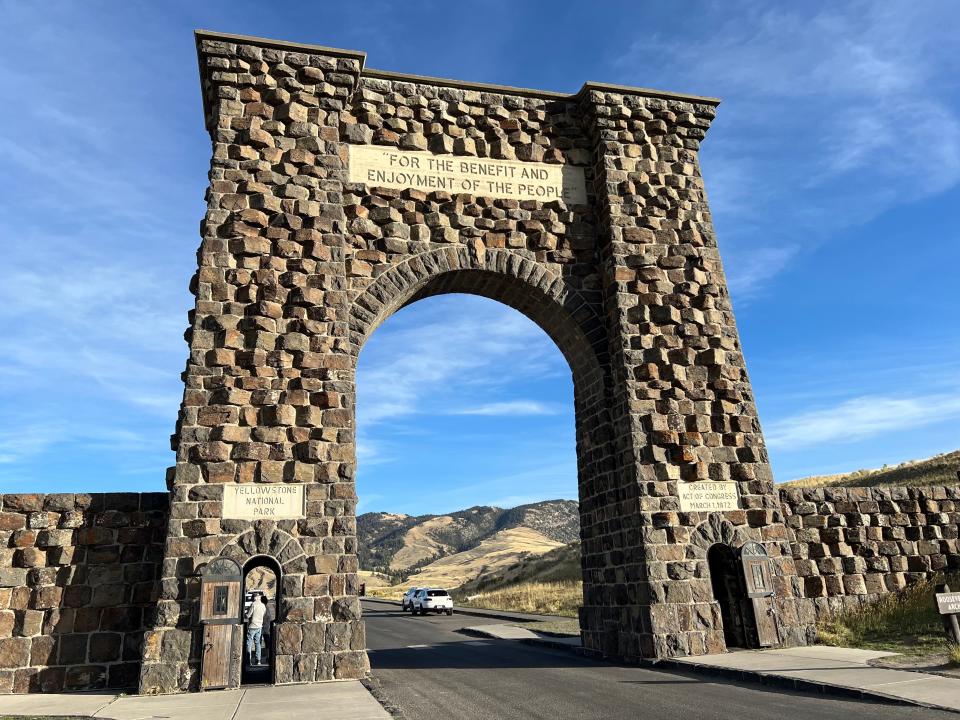Of all the beautiful places across America, Yellowstone National Park is particularly special.
Yellowstone’s mesmerizing hydrothermal features and spectacularly varied landscapes make it abundantly apparent why the land should be protected. As a plaque near the park’s Madison Information Station reads:
“Here at the junction of the Firehole and Gibbon Rivers on September 19, 1870, members of the Washburn-Langford-Doane Expedition gathered around a campfire on the last evening of their historic exploration of the Yellowstone country and discussed the astounding natural wonders they had seen. There emerged an idea, expressed by Cornelius Hedges, that there should be no private ownership of these wonders but that the area should be preserved for public enjoyment. Others shared these views, and on March 1, 1872, President Ulysses S. Grant signed the Act establishing Yellowstone as the world’s first National Park.”
Advertisement
Advertisement
But there’s more to that than it seems. Here are five things park lovers should know about Yellowstone National Park.
1. Self-preservation
In a way, Yellowstone helped protect itself.
While Indigenous peoples traveled the land for millennia, Randall K. Wilson, a professor of Environmental Studies at Gettysburg College and author of “A Place Called Yellowstone: The Epic History of the World’s First National Park” (Counterpoint Press), explained that western settlers initially avoided the area because of its unstable volcanic landscape and long, severe winters.
“It allowed it to be a wildlife refuge because the bison that were decimated everywhere else had a place to go where you didn’t find Euro-American settlers, and it allowed this not to be homesteaded necessarily and not to be claimed,” he said. “It took a long, long time, but by the 1870s, when they started actually doing the investigations and explorations into the area, it still was largely untouched and unclaimed, so it was available for protection.”
Advertisement
Advertisement
Yellowstone tips: 5 things I learned on my first visit

Yellowstone National Park’s Roosevelt Arch is inscribed with “for the benefit and enjoyment of the people.”
2. Practical matters
Early ideas for protecting the land weren’t as altruistic as they may seem.
“You had the Northern Pacific railroad, and you had boosters from Montana territory that wanted to build the economy of the area, get statehood and attract settlers,” Wilson said. “Neither of those two entities really had conservation on their mind. That wasn’t really the rationale for protecting this place. In contrast, it had to do with maybe, if we do protect it and keep settlers out, it could be a park and that, for the railroad, would provide a tourism opportunity.”
Similarly, he said lawmakers threw their support behind the idea because of the railway’s influence over them. “It wasn’t because everyone in Congress had this conservation ethic and was reading Thoreau and were romantics by any means. It was very pragmatic,” he said.
Advertisement
Advertisement
More in U.S.
He said pragmatism was also behind the decision to create a national park instead of a state park, as initially envisioned.
“Because the boundaries of the parks were not just in Montana, but also Wyoming and also a little bit in Idaho, there were two things: there was no precedent for a territorial park – all three of those were territories at the time – and because there was a dispute over it, that’s the reason it became a national park,” Wilson said. “Someone wasn’t thinking, ‘Oh, for conservation purposes, we need to create a national park system.’”
3. Calling the cavalry
Running the first national park proved extremely challenging.
“For the decade after 1872, when Yellowstone National Park was established, the park was under serious threat from those who would exploit, rather than protect, its resources. Poachers killed animals. Souvenir hunters broke large pieces off the geysers and hot springs. Developers set up camps for tourists, along with bath and laundry facilities at hot springs,” according to Yellowstone National Park’s website.
Advertisement
Advertisement
In 1886, the Army was called in to help protect the park and did so for over 30 years. Visitors can still see the historic Fort Yellowstone buildings in the park’s Mammoth Hot Springs area.
At first, Wilson said there wasn’t much that could be done about poaching. “If you came in and shot the wildlife, there was not a criminal consequence for that. There were no fines. There was no jail time. All they could ever do was escort people out of the park, and then they could just turn around and come back in and do it again.”
However, in 1894, the very first wildlife protection law was established, making it a crime to kill big game wildlife in Yellowstone. Additional conservation mandates were established with the creation of the National Park Service in 1916.
Trespassing in and defacing the park’s thermal features remains prohibited today, but there are several public springs facilities outside of the park. Visitors who break park rules can be arrested in Yellowstone, which has its own jail and justice center.

Visitors are asked to stay on boardwalks to not only protect themselves, but fragile thermal features of Yellowstone National Park.
4. Feeding the bears
One thing visitors should avoid is interacting with bears, but that wasn’t always the case.
Advertisement
Advertisement
Early on, park hotels noticed they were attracting bears when they threw trash out at night.
“They said, ‘Well, hey, this is an opportunity to see bears. What if we turn this into a tourist attraction? So, you have dinner, and then after dinner, you all go out back and watch the bears eat trash,” Wilson said. “And then people already in the 1890s are getting injured for the same reason they do today, getting too close to the bears.”
By 1931, the park reported seeing an average of 48 bear-inflicted human injuries and more than 100 incidents of property damage annually. Those continued until the park introduced bear management policies in 1960.
Old Faithful is ‘just a tiny fraction’: What you don’t know about Yellowstone National Park

Old Faithful continues to wow Yellowstone visitors.
5. What’s next
A supervolcano below Yellowstone National Park is behind all its hydrothermal activities.
Advertisement
Advertisement
“For scientists, the question is not whether it will erupt again, but when,” according to a video on the park’s website.
“Every 600,000 years, roughly, there’s been a mega eruption, and the last one was about 600,000 years ago,” Wilson said.
Not to worry, the park says the volcano is actively monitored so they will get plenty of warning.

A winter wonderland is seen outside the inside of a car in Yellowstone National Park on Friday, Oct. 18, 2024.
This article originally appeared on USA TODAY: 5 Yellowstone National Park facts that may surprise you
EMEA Tribune is not involved in this news article, it is taken from our partners and or from the News Agencies. Copyright and Credit go to the News Agencies, email news@emeatribune.com Follow our WhatsApp verified Channel





